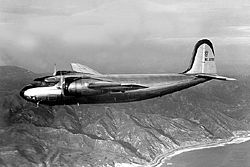
Douglas Dc-5
The Dc-5 was designed in the El Segundo facility of the Douglas Aircraft Company as a 16-/22 seat regional
airliner. It distinguished itself by itīs high fixed wings and bow-wheel landing gear. With a usual take-off weight
of 8391kg, it was offered with different engines; Pratt&Whitney R-1690 or Wright Cyclones.
The prototype started with Cyclones on 20.02.1939 with Carl Cover as pilot. KLM ordered four,
Pennsylvania Central Airways six, the columbian SCADTA two planes, but the program got disturbed by the
war, so only the KLM planes were delivered. The first two ones connected Curacao and Surinam in the
carribean, the other two served from Batavia (today Indonesia). All four planes helped 1942 to evacuate
civilians from Java to Australia. One plane was damaged on the Kemajoran Airport in Batavia and later tested
by the japanese in Tachikawa. The other three flew for the Allied Directorate of Air Transport in Australia, and
the USAAF called them C-110. The first military user was the US Navy, which oredered seven planes in 1939.
Three of them were 16seat R3D-1 (the first of them crashed before delivery), and four R3D-2 for the USMC
with R-1820-44 1015PS engines, big freight sliding door and tip-up seats for 22 paratroopers.
The prototype was later sold as a bussiness plane to William E. Boeing and then used by the Navy as R3D-3.
Derived by the DB-7 bomber, the DC-5 was superior to the Dc-3, but General H.H.Arnold directed the chief
designer Ed Heinemann (he also designed the DB-7, Invader, Skyray, Skyraider and Skyhawk) to cancel this
program because the US Army had already made itīs decision to buy the C-47 (Dc-3).
My comment:
If there wasnīt the damned World War 2, this plane wold have substituted the Dc-3, it was much more efficient.
(Same performance with only 70% of the engine power). Surely there were also some detail improvements I donīt
know. Maybe the only reason why it wasnīt put into production after WW2 is that thousands C-47 were available
to civilian users with nearly identical performance, legendary reputation and a much lower price than a new plane.
P.S.: The de Havilland D.H.-95 Flamingo was a extremely similar plane with similar fate. Only 16 were built.
| Specifications: | |
|---|---|
| Douglas Dc-5 U.S. commercial plane | |
| Dimensions: | |
| Wing span: | 23,77m |
| Length: | 19,05m |
| Height: | 6,05m |
| Weights: | |
| Empty: | 6.202kg |
| Maximum Take-Off: | 9.072kg |
| Performance: | |
| Maximum Speed: | 356km/h at 2345m |
| Cruise Speed: | 325km/h at 3050m |
| Service Ceiling: | 7.225m |
| Normal Range: | 2575km |
| Powerplant: | |
| Two Wright GR-1820-F62 radials with 862PS each | |
| load: | |
| 16 passengers (businnes plane) or 22 passengers (airline) | |
VH-ARD after take off at Essendon Airport (© Australian Aviation)
Don Incoll has got the details!
I first saw this plane in the book "The Encyclopedia of World Aircraft" by Orbis
Publishing Ltd. and Aerospace Publishing Ltd.